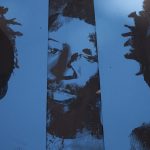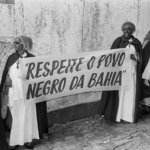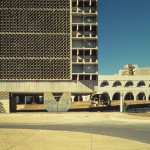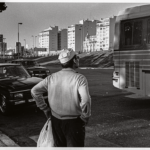Summary 05
Publicado em: 14 de October de 2013IN JUNE THIS YEAR, the Movimento Passe Livre (Free Fare Movement) called for marches in São Paulo to protest against the rise in public transport fares. The violent police repression together with the general dissatisfaction in the population drove millions of people to the streets in hundreds of the country’s towns. The protests persist until this day.
How can a biannual magazine dedicated to photography contribute to this political debate? One answer is in the most recent essay of Cia de Foto collective, published as a poster. Without the focus on the riots or police violence that inundated the media, these images shed light on group and individual participation in defense of democratic ideals. This reflection is made even more relevant because it comes from photographers who, in the beginning of the 2000’s, heated up the debate about authorship by signing images with the collective’s name, and not with their individual ones.
Politics and democracy permeate this edition. Chris Marker, who died in 2012, experiments with low resolution images taken in the Paris metro. His obsession with the female face is also an involuntary portrait of the immigrant batallions which clog the city’s arteries. No less engaged, Raymond Depardon settles his score with colour photography by reviewing his career of travels and conflicts in a text in which history blinks its eyes in every street corner. Told through archive images, Pablo Escobar’s journey of violence and oppression needs to be reckoned with if it is not to be forgotten.
Discarded Chinese photographs expose the enthusiasm and innocence which followed the opening of the country by Deng Xiaoping’s government. But can these photos really be given the status of artistic? This is what the Catalan thinker Joan Fontcuberta discusses in his article.
Experimentation and rebellion often give rise to good art. At the turn of the 1970’s, Mario Cravo Neto took the colour, volume and distortions of his sculptures to different mediums. Shown for the first time this year, the photographs were the kick off to the colourful production that would make
his best work. A few years and miles from there, Alberto García-Alix would live in black and white the colourful movida madrileña, which took over post-Franco Spain. To heat up the book fever, a powerful review discusses War Primer 2, an ambitious graphic and political intervention by the artist duo Broomberg & Chanarin in Bertolt Brecht’s war primer published in 1955.
What remains, in the end, is the advice given by Chilean Sergio Larraín to his nephew. When you see something good in a book or magazine, leave it open on the page, exhibited, for weeks, months, so long as it keeps saying something to you: “We take a long time to really see something.”







